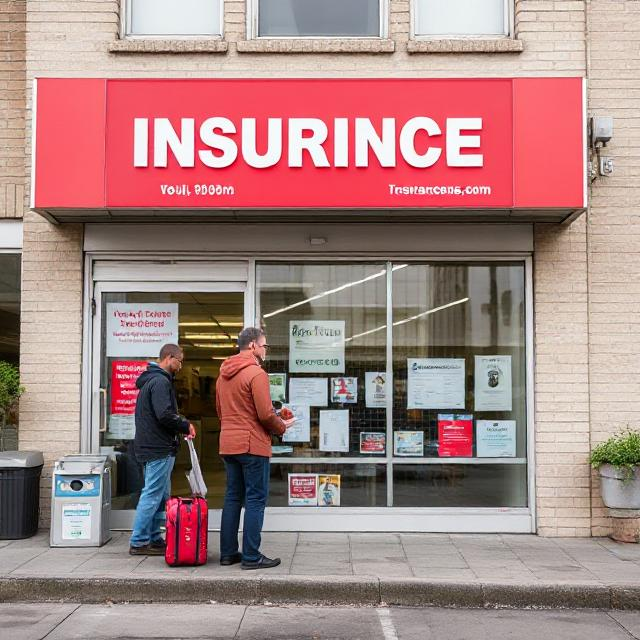Natural Disaster-Proofing Your Home are becoming more frequent and severe, making it essential for homeowners to protect their properties against potential damages. While investing in disaster-resistant features can help minimize risks, having the right insurance coverage is just as crucial. However, many homeowners are often surprised to learn what their insurance does and does not cover in the wake of a disaster.
In this blog, we will explore different types of disasters, how standard home insurance policies handle them, and what additional coverage you may need to fully protect your home.
Understanding Standard Home Insurance Coverage
A standard homeowners insurance policy typically provides coverage for a range of disasters, also known as “perils.” These commonly include:
- Fire and smoke damage
- Windstorms and hail
- Lightning strikes
- Explosions
- Vandalism and theft
- Water damage (not related to flooding)
However, standard policies often exclude major disasters like floods, earthquakes, and hurricanes. To ensure comprehensive protection, homeowners may need to purchase additional coverage tailored to specific risks.
Disasters Covered by Home Insurance
1. Fire and Wildfires
Fire damage is one of the most common disasters covered under standard home insurance. Policies typically cover:
- Structural damage to the home.
- Replacement or repair of personal belongings damaged by fire or smoke.
- Additional living expenses if you need temporary housing while repairs are made.
However, if you live in an area prone to wildfires, insurers may require you to take additional fire-resistant measures or purchase higher-tier coverage.

2. Windstorms and Hail
Wind and hail damage, such as from hurricanes or tornadoes, is generally covered. However, policies may have separate deductibles for wind-related events, especially in high-risk coastal areas. Some insurers may exclude wind damage in hurricane-prone regions, requiring homeowners to purchase additional windstorm insurance.
3. Lightning Strikes
If lightning strikes your home and causes damage or fire, your insurance policy typically covers the repair costs. This also includes damage to electrical appliances caused by power surges resulting from a lightning strike.
4. Water Damage (Non-Flood Related)
Water damage from burst pipes, leaking roofs, or appliance malfunctions is typically covered. However, flooding due to heavy rainfall, storm surges, or overflowing rivers is not covered under standard homeowners insurance.
5. Theft and Vandalism
If your home is broken into or vandalized, your insurance will generally cover the cost of stolen items and repair damages. However, there may be limits on high-value items such as jewelry, art, or electronics, requiring additional coverage.
Disasters Not Covered by Standard Home Insurance
1. Floods
Flooding is one of the most common and costly natural disasters, yet it is not covered by standard home insurance. To protect your home, you will need to purchase a separate flood insurance policy through the National Flood Insurance Program (NFIP) or a private insurer.
2. Earthquakes
Earthquakes can cause severe structural damage, but most standard policies exclude them. Homeowners in high-risk areas, such as California, must purchase a separate earthquake insurance policy to cover damages caused by seismic activity.
3. Hurricanes
While wind damage from hurricanes is often covered, storm surges and flooding caused by hurricanes are not. Homeowners in hurricane-prone areas may need to purchase hurricane insurance or add windstorm and flood insurance for full protection.
4. Landslides and Mudslides
Damage caused by shifting earth, landslides, or mudslides is usually not covered. Some insurers offer specialized earth movement policies for homeowners in high-risk regions.
5. Sewer Backup
Sewer backups caused by heavy rain or clogged municipal systems can lead to costly damage. Since this is usually excluded from standard policies, adding a sewer backup rider can provide extra protection.
Additional Insurance Coverage to Consider
To ensure full disaster-proofing of your home, consider the following additional coverage options:
1. Flood Insurance
- Covers water damage caused by floods and storm surges.
- Required for homes in high-risk flood zones.
- Can be purchased through NFIP or private insurers.
2. Earthquake Insurance
- Covers damage from seismic activity, including structural repairs and personal property losses.
- Available as an add-on policy in earthquake-prone areas.
3. Windstorm and Hurricane Insurance
- Provides coverage for damage caused by high winds and hurricanes.
- Often required in coastal regions.
4. Sewer and Drain Backup Coverage
- Covers damage caused by backed-up sewer lines and drainage systems.
- Helps cover cleanup and repair costs.
5. Loss of Use Coverage
- Pays for temporary living expenses if your home becomes uninhabitable after a disaster.
- Covers hotel stays, meals, and additional living costs.
Tips for Disaster-Proofing Your Home
Besides having the right insurance coverage, homeowners can take proactive steps to minimize disaster-related risks:
1. Strengthen Your Home’s Structure
- Reinforce your roof and windows to withstand strong winds.
- Install fire-resistant materials and create defensible space around your property.
- Elevate your home if located in a flood-prone area.

2. Install Smart Home Security and Detection Systems
- Use smoke detectors, water sensors, and security alarms to prevent extensive damage.
- Install a backup sump pump to prevent basement flooding.
3. Maintain Your Property Regularly
- Clear gutters and drainage systems to prevent water buildup.
- Trim trees and remove dead branches to reduce the risk of wind damage.
4. Create an Emergency Preparedness Plan
- Store important documents in a fireproof safe.
- Keep emergency supplies, including food, water, and first aid kits.
- Plan an evacuation route for your family.
Conclusion
Disaster-proofing your home goes beyond installing safety measures—it requires a clear understanding of what your insurance actually covers. Standard homeowners insurance protects against many common perils, but additional policies may be necessary to cover major disasters like floods, earthquakes, and hurricanes.
To avoid financial devastation after a disaster, review your current insurance policy, assess your home’s risk factors, and invest in necessary supplemental coverage. By being proactive, you can safeguard your home and family against unexpected events while ensuring a secure financial future.
